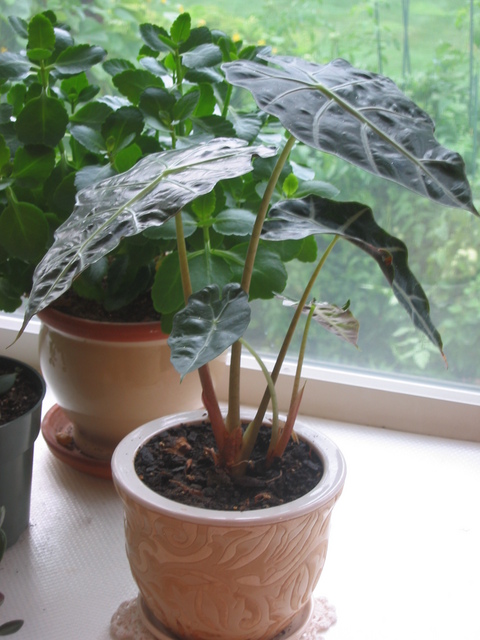The Right Way to Water a House Plant
Are you confused about watering your houseplants? Many people consider it a simple matter, watering their plants whenever they think of it. Others are more methodical. They water regularly, according to the calendar, regardless of their plants’ needs. Neither of these approaches is best for the plants.
Learn to read the signs that your plants need water. Foliage turns a slightly duller, less lively green. Succulent leaves become a little rubbery. The container feels the lighter weight as moisture evaporates from the soil. And soil feels dry to the touch, first at the surface, then below it.
Water requirements vary among different groups of houseplants, but regardless of what types of plants you care for, water them thoroughly each and every time you water. Then spill out the extra water that comes through the drain holes.
Cacti and succulents may be allowed to get quite dry between watering, though when the light is good; they’ll thrive on additional moisture. Plants with tough leathery leaves such as the old-fashioned rubber tree or ponytail palm can also go for quite a long time from one thorough watering to the next.
Most foliage plants should be watered before much of their root system dries. When you first find the soil surface no longer feels moist, there is still moisture further down in the container. This is good because for most houseplants it’s best to avoid wild swings from extremely dry to extremely wet soil conditions.
Varied particle sizes in potting mix improve drainage. The type of potting soil in which your plants are growing can have an impact on how often you water. So can the type of container. Always use clean, fresh potting soil that consists of different sized particles. Varied particle size results in good soil drainage. The more moisture you wish the potting soil to retain, the higher its peat content should be.
Layering pebbles or charcoal in the bottom of a solid container will not help soil drainage. Instead, choose containers with drain holes so water can drain freely from the soil. Be sure to spill out any excess water that remains in the tray or saucer after a few minutes. If the container is too large to lift easily off its tray, use a plastic turkey baster to siphon most of the extra water.
Don’t use “softened” water unless you really have no choice. It adds chemical salts to the soil which eventually build up and injure roots, just as excess fertilizer does. If you must use softened water, hold your containers over a sink or wash basin and water them heavily each time you water. This flushes much of those salts, even though some new will be added. Of course, pots must have good drain holes for this to work.
Chlorine, which is added to city water supplies to purify it for drinking, is not present in large enough amounts to damage houseplants. Fluorine added to fight tooth decay, may be a different story. Certain plants, mostly those with long, pointed leaves such as dracaenas and spider plants are quite sensitive and can develop brown tips. However, water is rarely the only source of fluorine, and most plants have no problem with city water.
What does trouble them is icy cold water. Most of the houseplants we grow originated in the tropics or sub-tropics where rainfall is relatively warm. If you water directly from the tap, adjust it to feel barely lukewarm. Or take the easy way; keep a full watering can at the ready for any time you might want it. Its contents will always be room temperature, making it easy to respond to the needs of individual plants.
Answer: Hi Kathleen, It would seem to me that if this is not a disease problem you might have a problem with the soil where the tree is placed. Could there be an underground spring, or is it too close to a septic field line? Or maybe the soil underneath that plant is compacted and needs aeration. A lot of times if the soil is too hard the roots cannot penetrate the soil and oxygen cannot get down to the roots. I would also suggest that you try using a Ross root feeder that attaches to a garden hose. It will aerate and fertilize the tree at the same time. Until next time…Happy Gardening!!

